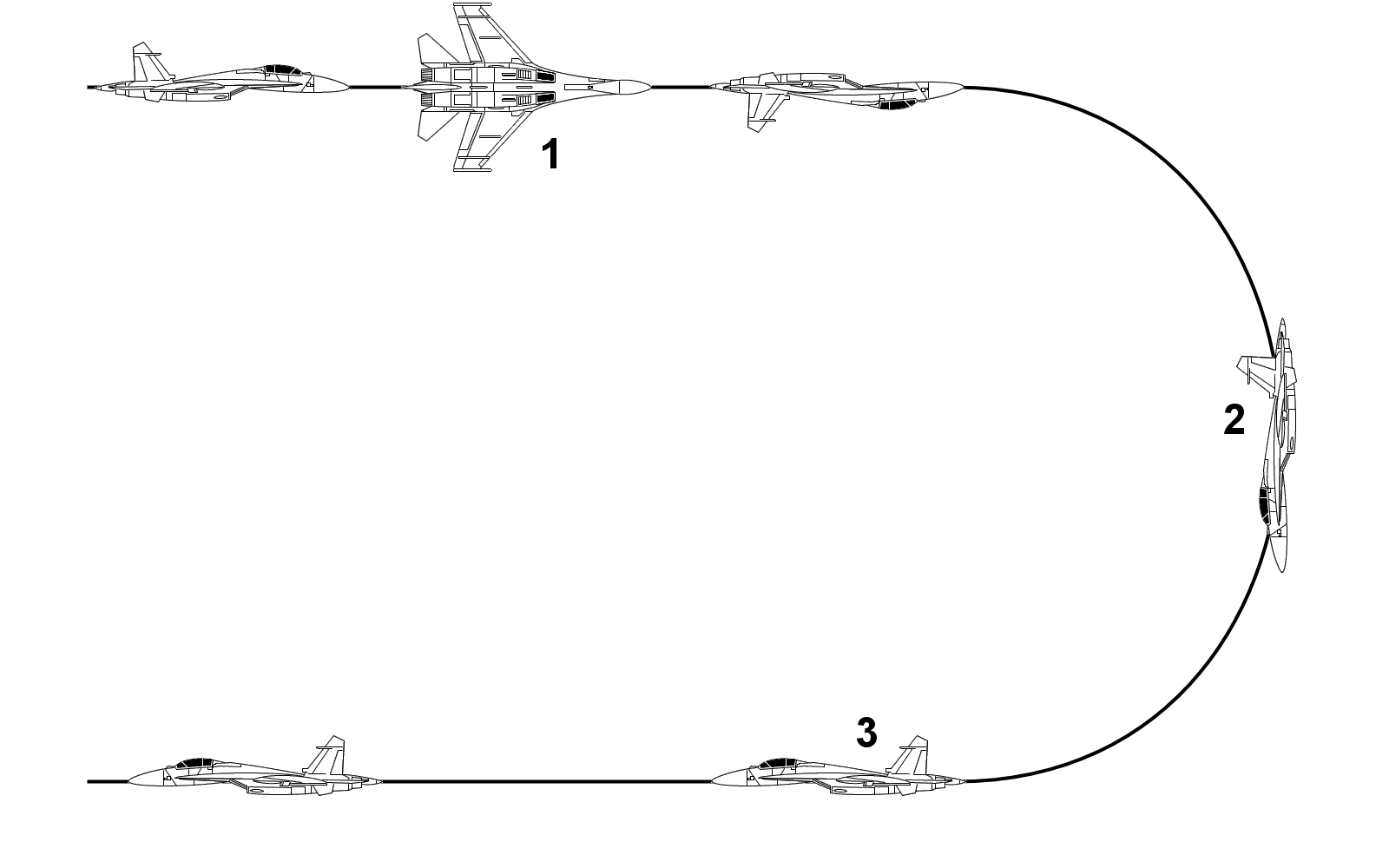Split S on:
[Wikipedia]
[Google]
[Amazon]

 The split S is an Aerobatic maneuver and an air combat maneuver mostly used to disengage from combat. To execute a split S, the pilot half-rolls their aircraft inverted and executes a descending half-loop, resulting in level flight in the opposite direction at a lower altitude.
The split S is an Aerobatic maneuver and an air combat maneuver mostly used to disengage from combat. To execute a split S, the pilot half-rolls their aircraft inverted and executes a descending half-loop, resulting in level flight in the opposite direction at a lower altitude.
Aerobatic manoeuvre website
{{Aerobatics Aerial maneuvers Articles containing video clips

 The split S is an Aerobatic maneuver and an air combat maneuver mostly used to disengage from combat. To execute a split S, the pilot half-rolls their aircraft inverted and executes a descending half-loop, resulting in level flight in the opposite direction at a lower altitude.
The split S is an Aerobatic maneuver and an air combat maneuver mostly used to disengage from combat. To execute a split S, the pilot half-rolls their aircraft inverted and executes a descending half-loop, resulting in level flight in the opposite direction at a lower altitude.
Description
The split S is taught to be used in dogfighting when the pilot has the opportunity to withdraw from battle. It can be an effective tactic to prevent an enemy behind (between four o'clock and eight o'clock positions) from gaining a missile lock-on while one is disengaging from a fight. The split S is contrasted with the Immelmann turn, which is an ascending half-loop that finishes with a half-roll out, resulting in level flight in the opposite direction at a higher altitude. The split S is also called a reversed Immelmann turn and can also be written with a hyphen: split-S. In basic terms, the Immelmann and split S are very similar, both accomplishing the same reversal in course, but the split S exchanges altitude to gain speed, while the Immelmann turn exchanges speed to gain altitude. The split S, being a descending maneuver, means that the pilot must ensure that it is started high enough to complete the half-loop; the exact minimum altitude depends on factors like the aircraft's speed, weight and maneuverability, likewise the terrain below the plane. Misjudgements can arise from a lack of situational awareness or from an error in reading instruments. The reasons for starting the split S maneuver from the inverted position include the fact that people tolerate acceleration ("g-force") applied from head to feet several times better than the reverse direction, as much as 9g versus 3g. Most combat aircraft frames are also designed to pull more Gs in their positive aspects (upward to the aircraft), rather than negative (downward to the aircraft). A much tighter maneuver is therefore possible with the half roll. The split S without a beginning half-roll was a standard maneuver in early World War II by German pilots seeking to evade British fighters. TheMerlin engine Merlin engine may refer to:
*Rolls-Royce Merlin, an aircraft engine
*Merlin (rocket engine family)
Merlin ( cy, Myrddin, kw, Marzhin, br, Merzhin) is a mythical figure prominently featured in the legend of King Arthur and best known as a mag ...
used in British fighters was carburetted, and the float valves would malfunction under negative g-force
The gravitational force equivalent, or, more commonly, g-force, is a measurement of the type of force per unit mass – typically acceleration – that causes a perception of weight, with a g-force of 1 g (not gram in mass measur ...
leading to reduced power or a stalled engine (The German fighters were not subject to this problem since they used fuel injection
Fuel injection is the introduction of fuel in an internal combustion engine, most commonly automotive engines, by the means of an injector. This article focuses on fuel injection in reciprocating piston and Wankel rotary engines.
All com ...
). This could be prevented by rolling the aircraft before starting the dive, but doing so took up enough time to give the German pilots an excellent chance of escaping. The beginnings of a solution was provided by " Miss Shilling's orifice", a fuel-flow restriction device, and was finally solved by changing from the original S.U. carburettors to Bendix-Stromberg pressure carburettors, and later to S.U. injection carburettors.
See also
* Chandelle *Scissors
Scissors are hand-operated shearing tools. A pair of scissors consists of a pair of metal blades pivoted so that the sharpened edges slide against each other when the handles (bows) opposite to the pivot are closed. Scissors are used for cutt ...
* Thach weave
References
External links
Aerobatic manoeuvre website
{{Aerobatics Aerial maneuvers Articles containing video clips